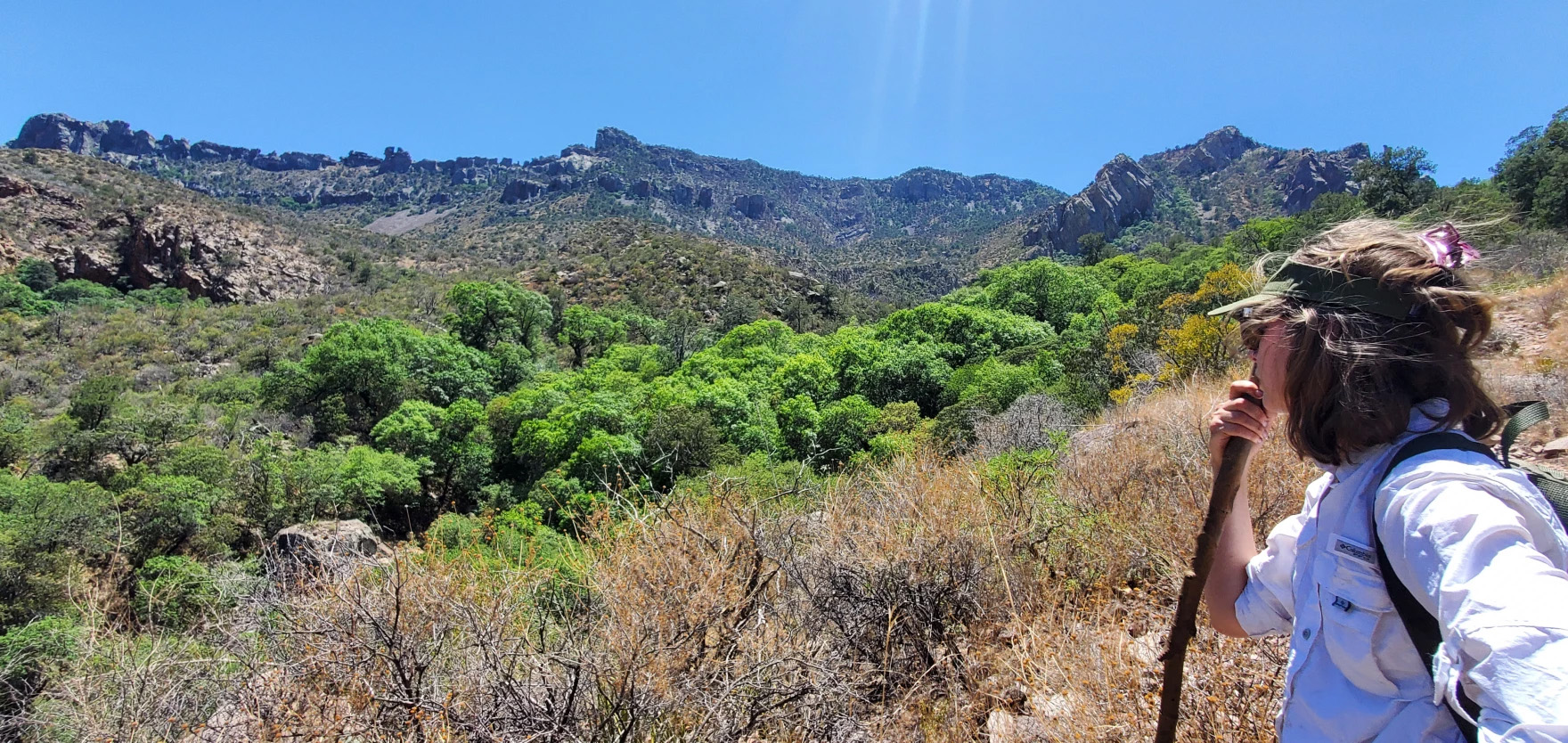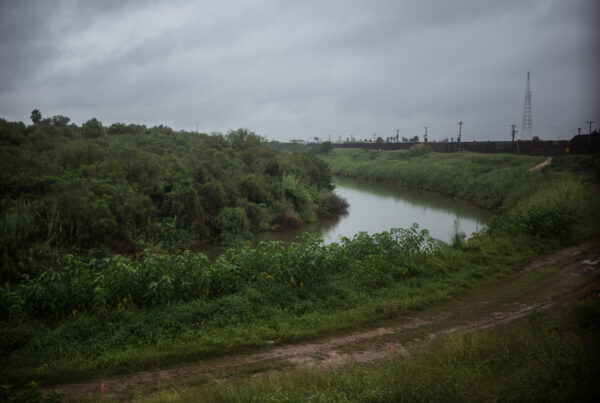From Texas Public Radio:
A decade ago, the Quercus Tardifolia oak tree was declared extinct. But last year, Michael Eason, a scientist with the San Antonio Botanical Garden’s Rare Plants and Conservation program, found a pair of them in the West Texas mountains.
“It was presumed extinct for just over a decade, and we don’t really know what happened with the known one plant that was located up in Big Bend National Park and in the Chisos Mountains there in Boot Canyon. Somehow, sometime around 2011, it just disappeared,” he explained.
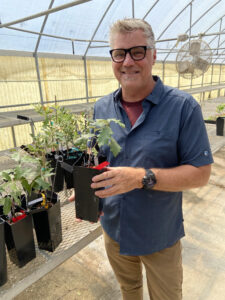
Michael Eason holds Quercus Tardifolia that he’s growing in a greenhouse.
The Chisos are the tallest mountains in Big Bend. Emory Peak stands at 7,825 feet. Boot Canyon is a narrow north-facing canyon that gets less sun, and rain drains from the peaks down through the Canyon, making it more inviting for trees.
Quercus is the species — oak — and Eason said Tardifolia highlights something specific about the tree. “The Tardifolia — that basically means it leafs out late, whereas most other ones are much earlier in the season,” he said.
If you’re late, you’re tardy, and that’s why it earned that name. There’s another thing about this tree that’s peculiar: It’s not just late to come out in the spring.
“It changes its leaves over much, much later than other species,” Eason said.
Like Live Oaks, the Tardifolia keeps its leaves all winter, and it doesn’t lose them until the next spring.
“This species is one of those sort of relic species of millennia ago, whenever the climate here was much wetter and cooler. And so the only places it can really survive out here in West Texas is higher elevations, where it is wetter and cooler.”
Over thousands of years as Texas heated up, it became tougher for these trees to survive and thrive. Also, the trees complicate matters for scientists.
“The oaks out here in West Texas and northern Mexico are, in a word, ‘confusing,’ ” he said.
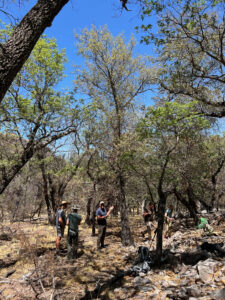
Quercus Tardifolia found in Boot Canyon. Courtesy Photo / UC Davis Arboretum And Public Garden
Oak trees tend to cross-pollinate, creating sub-species constantly. So classifying them as one species or another becomes a lot more tricky.
“The Tardifolia, the one that nobody could ever find, was sort of a — I wouldn’t say a missing link — but we were trying to figure out ‘where does this sit?’ ” Eason said.
There’s only so much they can do in the field. Scientists sent leaves to Morton Arboretum in Illinois to put them under the microscope to be sure what they’d found was really Tardifolia. It was.
Then, they went back to Boot Canyon in January, when most trees had dropped their leaves, but they discovered the Tardifolia hadn’t.
“We had eight people stretched across the sides of mountains or within canyons and we just walked,” he said. “So that way you have a pair of eyes being able to look and cover much, much more ground. And that’s how we came across this one large oak out in West Texas.”
He was thrilled to find something thought to be permanently gone.
“Oh, yeah. It’s definitely a highlight of the career finding something that was presumed extinct,” he said. “There’s definitely elation when we found it that first day, I was pretty emotional. I don’t think anyone thought that we would find two, and I don’t think anyone ever thought that we would be looking at other populations on private land.”
Subsequent surveys have discovered a few more trees on ranchland outside Big Bend, and also in moist canyons. Eason and his team cut off shoots, brought them back to San Antonio, and they’ve been grafted onto other oak rootstock, and are thriving.
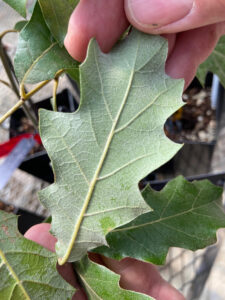
The back side of Tardifolia leaf, with tiny hairs that keep moisture from evaporating off the leaf. Jack Morgan /
Texas Public Radio
Their plan is to take another survey in January when most other trees have lost their leaves, making Tardifolia stand out. But there is no plan to re-introduce them to Big Bend because they can’t fight nature.
“So we have to grow these out and keep them in a safe place and safe places or places like Botanic Gardens or arboreta,” Eason said.
They will plant a few at the San Antonio Botanical Garden, and they will ship others to botanical gardens from coast-to-coast to be planted on their grounds, all but ensuring this species doesn’t just disappear from the face of the earth, even if they eventually do from the Chisos.
“It’s one of those rare success stories in conservation and being part of that, especially here in Texas, being part of that, it’s pretty remarkable,” he said.
In a few years, visitors to the San Antonio Botanical Garden may get to rest in their shade.


